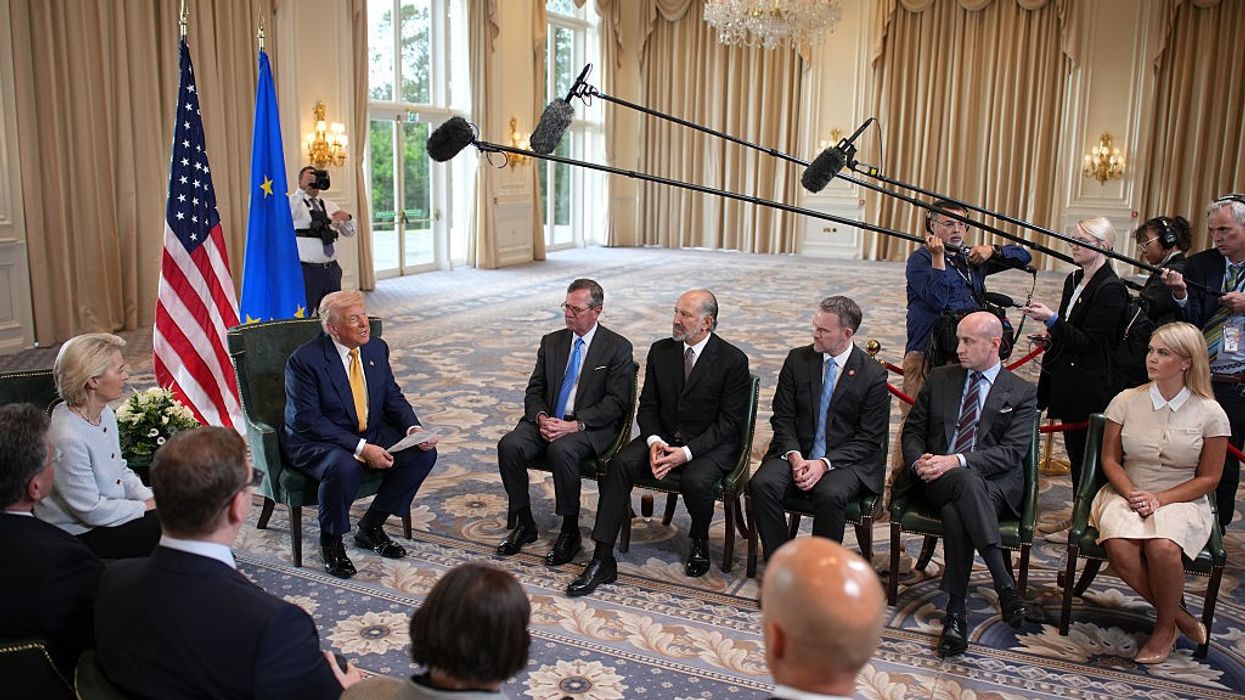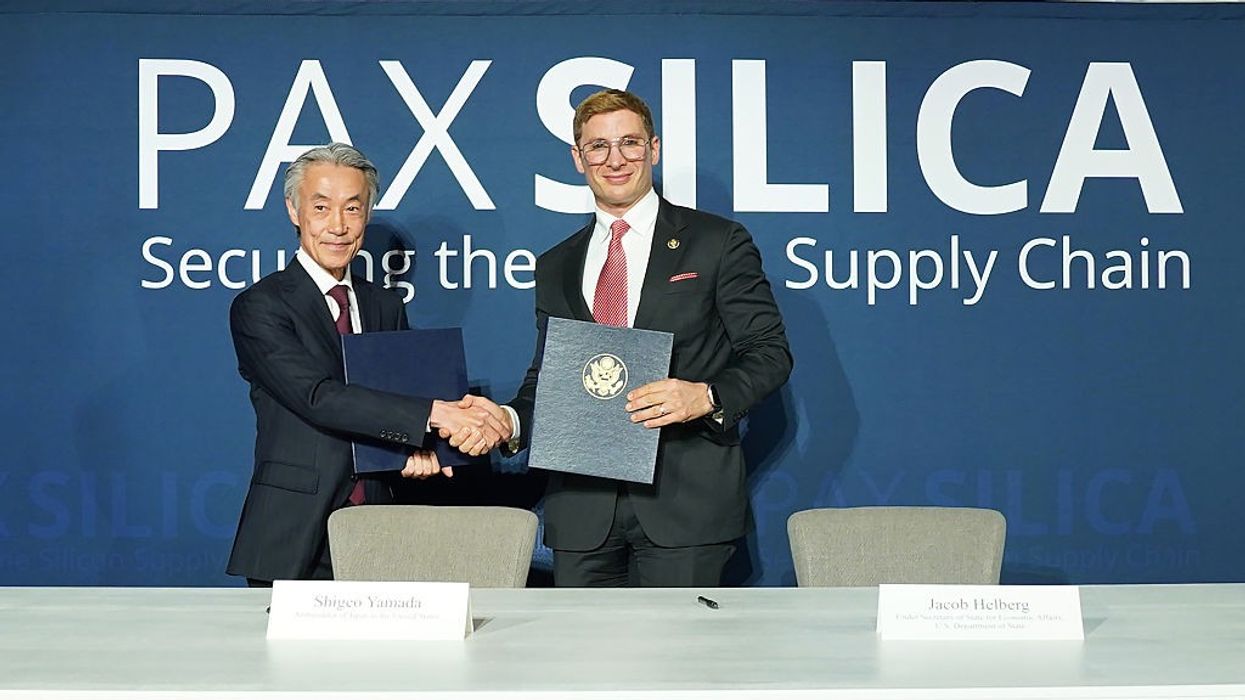US President Donald Trump declared on Sunday (July 27) that the United States and the European Union had reached a framework trade deal, ending months of tense negotiations that had threatened to erupt into a costly transatlantic trade war.
The announcement came during Trump’s visit to his Turnberry golf resort in Scotland, where he appeared alongside European Commission President Ursula von der Leyen. Trump hailed the agreement as “the biggest deal ever made” between the two economic blocs, emphasizing its aim to reset the trade relationship and reduce tariff tensions that had rattled industries on both sides of the Atlantic.
As part of the deal, the EU has agreed to purchase $750 billion worth of U.S. energy and invest an additional $600 billion in the American economy. Trump also confirmed that a 15% tariff will be imposed on most EU imports, including automobiles, semiconductors, and pharmaceuticals, beginning August 1.
Speaking at the same event, U.S. Commerce Secretary Howard Lutnick reinforced the administration’s hardline stance, stating that the August 1 tariff deadline is final and that there will be “no further extensions or grace periods.” He noted that while talks with other trading partners can continue, the tariff schedule will proceed as planned, signaling a strict enforcement approach to Trump’s trade agenda.
Key elements of the deal
The deal sets a baseline tariff of 15 per cent on most European imports to the US, including automobiles, pharmaceuticals, and semiconductors, replacing previously threatened higher tariffs—some as much as 30 per cent. Notably, this 15 per cent rate is lower than Trump’s earlier threat to impose 30 per cent tariffs starting August 1 but remains above the 10 per cent baseline that the EU had sought.
Von der Leyen emphasized that the arrangement would bring stability and predictability to trade across the Atlantic. Important sectors such as aircraft and certain pharmaceuticals will be exempt from tariffs, and existing US tariffs will not be layered on top of the new 15 per cent rate.
As part of the agreement, the EU committed to purchasing $750 billion worth of energy from the US during Trump’s second term, covering oil, gas, nuclear fuel, and chips. Additionally, European firms plan to invest an extra $600 billion in the United States beyond current levels. The EU also agreed to procure US military equipment, underscoring broader strategic ties in the partnership.
Reactions from European leaders
European leaders expressed cautious relief and mixed reactions. Germany’s Chancellor Friedrich Merz hailed the avoidance of a trade war that would have harmed Germany’s export-driven economy. Italy’s Prime Minister Giorgia Meloni welcomed the deal as “positive” but reserved judgment pending details. Irish Prime Minister Micheál Martin described it as “good for businesses, consumers and investors” while acknowledging higher tariffs would add challenges.
Conversely, French Prime Minister François Bayrou lamented the deal as signaling a “dark day” for allies, reflecting concerns over the departure from zero tariffs and the implications for the transatlantic alliance.
Background and negotiation context
The deal came just days ahead of a critical August 1 deadline, by which the US had threatened to impose a sweeping 30 per cent tariff on EU goods due to ongoing trade deficit concerns. Previous threats had ranged as high as 50 per cent tariffs on EU imports. Earlier rounds of tariffs led to temporary 20 per cent levies before Trump paused them to allow for talks.
The EU sought to maintain a 10 per cent baseline tariff, while Trump demanded at least 15 per cent, viewing fairer access for American goods as a non-negotiable priority. The agreement reflects compromise, settling in between those demands and securing large investment and energy purchase commitments from the EU.
Impact on global trade and markets
The United States and EU collectively trade nearly $1 trillion in goods yearly, making this deal critical for global economic stability. The agreement lowers the risks of a transatlantic trade war that would disrupt supply chains and consumer prices worldwide.
Financial markets responded positively, with the Stoxx Europe 600 index reaching a four-month high on July 28, buoyed by the reduction in trade uncertainty. Key indexes in Germany and France similarly gained.
Next steps and remaining issues
Though the framework outlines key terms, details on specific tariff exclusions—such as for wine, spirits, timber, and copper—and enforcement mechanisms are still being finalized. The US Commerce Department will soon reveal tariff outcomes from ongoing investigations affecting sectors like semiconductors.
Trump reaffirmed that steel and aluminum tariffs on certain countries would remain at 50 per cent, and warned other trading partners of imminent tariff deadlines. Talks with China continue under a separate truce aiming to avoid expanded tariffs, with negotiations scheduled for early August.
The new US-EU trade framework represents a tentative thaw and pragmatic compromise after months of escalating tariff threats that risked triggering one of the largest trade conflicts in decades. While it has not delivered a zero-tariff free trade agreement, it clears a path toward renewed cooperation, greater investment, and strategic partnership between two of the world’s biggest economies.
This deal affirms president Trump’s focus on restructuring trade to protect American interests, while European leaders cautiously accept increased tariffs as a price for avoiding full-scale conflict. The coming weeks will be crucial as negotiators nail down the trade architecture that will govern US–EU relations for years to come.















